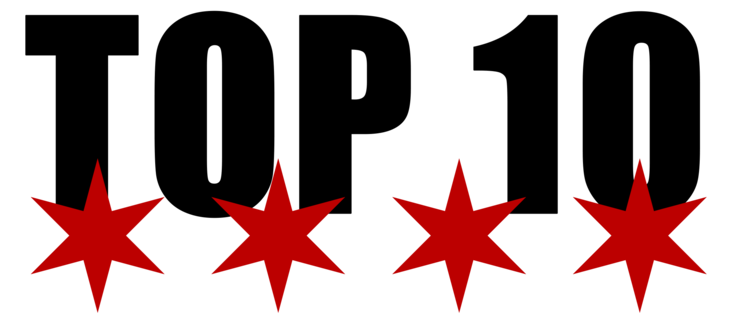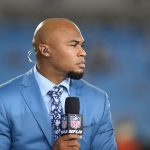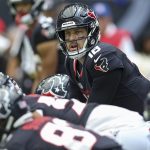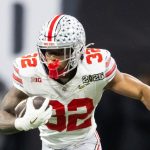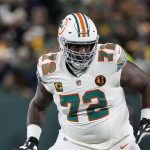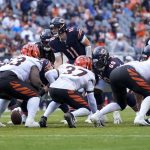Wednesday marked the 30th anniversary of the first game under the lights at Wrigley Field. As we all know, the game was washed out and 8.9.88 became the ‘official’ first night game at the Friendly Confines.
But if we look back just 4 years earlier, an N.L East-leading Chicago Cubs team was faced with a dilemma. If they made the World Series, where would it have been played? New TV deals made prime-time World Series Games mandatory, and the Cubs, who had a likely shot at the fall classic, were left with the prospect of playing at Bush Stadium for the club’s first trip to the World Series since 1945. Can you imagine that? Neither could Cubs fans.
But as we all know the Cubs fell to the Padres in ’84 in heartbreak and this debate was a moot point. Fast forward to 1988, it was finally time for the Cubs to get a chance to play night games, like the rest of the league had been doing already for 50 years. While the neighborhood complained the Cubs installed the lights and the rest was history.
This anniversary provides a reminder of what the Cubs were and what they have become over the last 9 years. While many articles would focus on the team on the field in this span, this is about the organization itself. A franchise that was unable to play night games just 30 years ago, has now transformed a neighborhood, built state of the art facilities and done the unthinkable, rebranded the ‘loveable losers’ into perennial winners.
November 2, 2016- The Cubs get the final out to seal their 10-inning Game 7 win, giving the team their first World Series title since 1908. pic.twitter.com/ThhK3xyEMk
— High & Outside Sports (@HighandOutside_) January 14, 2017
Soak it in Cubs fans, you are living in the golden age of Cubs baseball, not just on the field, but off it too. Over the last decade, the Cubs have found the right recipe to take full advantage of a neighborhood, city, and fandom that were rarely rewarded on the field for generations. The Cubs’ fans mentality has changed forever. Their futility is over. And with a World Series to show for it, the next generation of Cubs fans will know nothing different than a bustling Cubs Kingdom surrounding Clark and Addison.
I’ve never figured out as to why previous owners of the Chicago Cubs never took full advantage of the true potential the Cubs always had. They took the city, their fans, and Wrigleyville for granted and never capitalized on what has now become a year-round revenue machine.
Tom Ricketts, Crane Kenney (when he switched to Business Operations) along with Theo Epstein and Jed Hoyer transformed the Cubs organization into what it always should’ve been. A charter franchise leading the way in innovation, marketing, business, and baseball.
But remember, and I cannot stress this enough, the Cubs did not have lights until 1988. The rooftops, neighborhood and local government were not friendly partners, and the team continuously found itself caving to public pressure about night games, concerts and more. But now, who is angry that there are night games or constant bustling life in an area that only saw it 6 months out of the year just a few years ago? I haven’t heard many complaints.
The Cubs were averse to change and simply thought their way of doing business was how it had to be. However, they couldn’t have been any further from the truth, just ask Tom Ricketts.
When Ricketts took over the team in 2009, his office was in the basement of Wrigley Field in a windowless office, the team still processed ticket orders through fax machines and the closet outside his office housed the Cubs’ computer system, held down and covered by a lunch tray, to avoid leakage from the crumbling infrastructure. Unlike those before him, Ricketts knew this was not acceptable, and for the first time in 21 years, he and the Cubs made a change. In ’88 it was the lights, in 2009, it was an overhaul of the entire organization.
The Cubs were coming off of back-to-back playoff appearances for the first time since 1907 and 1908 in 2009. In previous years, those achievements would have been enough, but Ricketts knew that wasn’t good enough. As Theo and Jed built the Cubs into a playoff contender, Ricketts and Kenney got to work.
It is now nine years later, so step back, and take a moment for what you now associate with the Cubs in addition to 3 straight NLCS appearances and a World Series Title? If you take a walk around Wrigleyville, you would see a continuously renovated Wrigley Field with video boards, signage, upgraded seating, clubs, batting cages, modern bullpens, new locker rooms, new dugouts, new technology and more. Outside the ballpark you would find the Cubs new state of the art office building with a jumbotron, Gallagher Way, Trophy Room, bustling restaurants and bars (which the Cubs own, a new alternative revenue stream), Hotel Zachary and more, the list keeps growing. And even if you can’t make it to the park, the franchise has you covered with an un-rivaled marketing campaign on social media, TV, and radio to keep you up to date on the latest news about your favorite team. And by the way, they have created baseball academies in South America and a world-class spring training facility in Arizona, all in an effort to provide the perfect environment to develop the next superstar.
And it is no question that Wrigleyville is thriving because of the upgrades. The Cubs have made game-day and all-day event with activities surrounding the ballpark. And that means even more revenue for the local businesses surrounding Wrigley. The earlier fans get to Wrigleyville, the more likely they are to spend money in the area on food, drinks souvenirs and more. For a neighborhood and local government that banned an inning from starting after 8pm in 1941, they are now a part of the Cubs wave, reaping in the financial benefits that the Cubs could’ve always provided for them.
But again, nine years ago, the Cubs were covering computer wires with a lunch tray in case a fan’s beer dripped through the cracks of the concrete, potentially shutting down an entire day’s work with one drop. That’s an incredible thought.
Cubs fans who grow up in this era will be a very interesting group to study over the next 20 years as they will only know the Cubs as a winning organization both on and off the field. They couldn’t tell you stories of a crumbling ballpark, a non-committed ownership and front office group or about a lackluster team and a conservative attitude.
It is the same mindset younger Blackhawks fans have. If you were to tell a fan in 2030, that was born 1998, that the Hawks didn’t’ televise home games until 2007, they will have a hard time understanding that concept. Remember, they only televised 7 home games 3 years before they captured the city with their Stanley Cup title. Like the Cubs, the Blackhawks were stuck and spiraling downward. Now they are the model organization in the NHL.
The Cubs are now recognized as an aggressive and progressive organization and one that understands the true power they have in the city of Chicago. The Cubs will never again be behind the times. They will never be 53 years behind on any project as they were installing lights in Wrigley Field. The Cubs are on a trajectory to build themselves into even a greater organization then they are now. And that’s an impressive path to be on.
The Cubs were stuck in the stone age, and while it took them 139 years to get out of their own way, they did and continue to do so today. August 8th, 1988 is a reminder of just how large of an achievement it was just to install lights in the ballpark, and how that would be a simple quick-fix item on the current Cubs’ to-do list.
Putting lights in Wrigley Field was an inconceivable thought for a fan base and an organization that stuck more to complacency in the guise of tradition for too long. The Cubs are now at the forefront of what it means to be a thriving organization. And to top it all off, in their final plans for a completely renovated Wrigley Field, is the installation of two extra light towers in left and right field. A fitting end to a now-forgotten ‘dark age’ of Cubs baseball.


